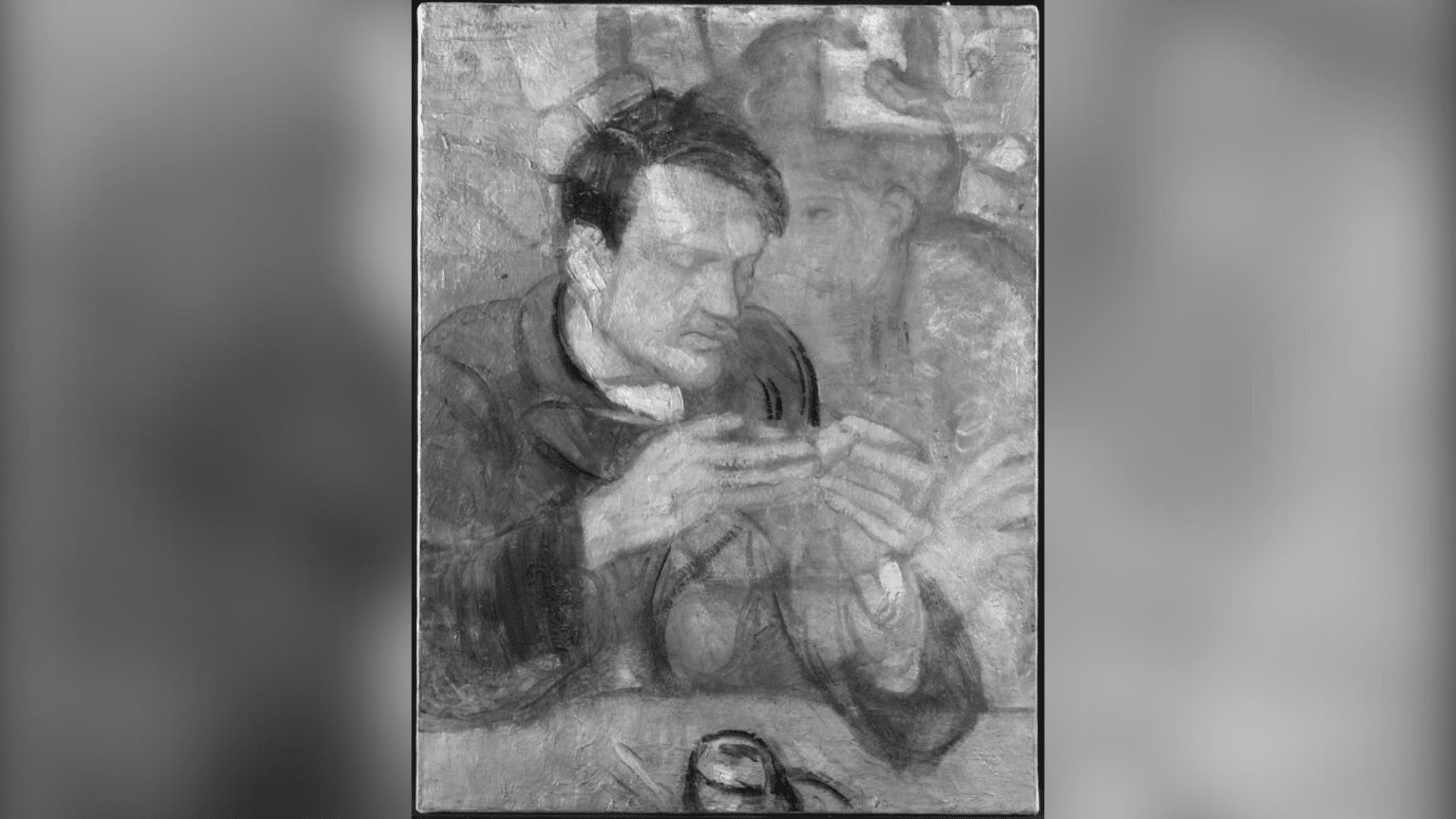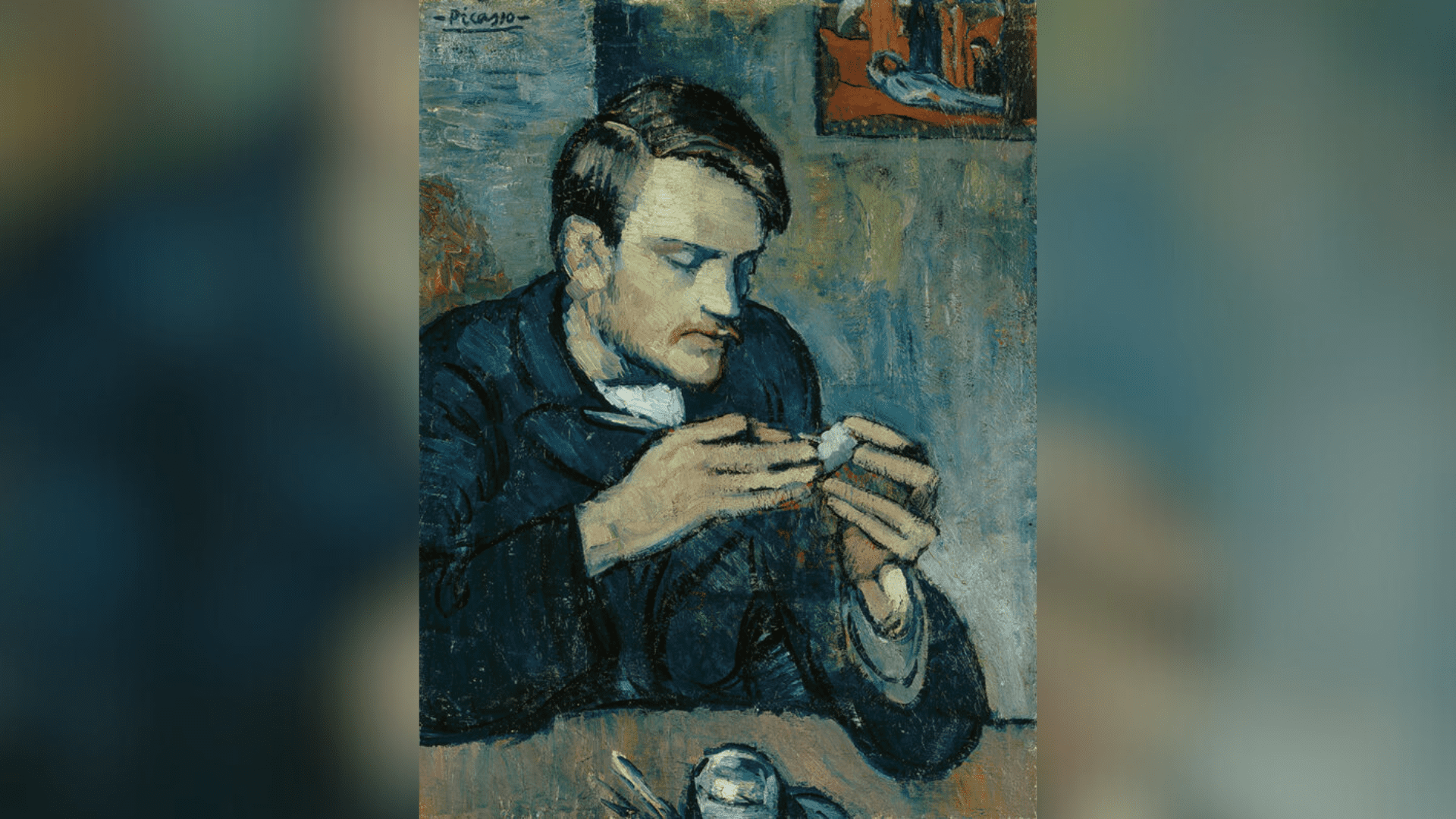For over a century, an undiscovered painting by Pablo Picasso hid beneath one of the artist’s first paintings. Conservators from The Courtauld Institute of Art revealed the portrait using imaging technology. According to the specialists, the original painting that covered the recently discovered piece is from the artist’s Blue Period (1901-1904).
Uncovering the Lost Painting

The Courtauld took x-ray and infrared images of the Portrait of Mateu Fernández de Soto, a portrait of Picasso’s sculptor friend created in 1901. Upon taking these images, the conservators uncovered the hidden artwork. These images revealed another portrait, one of a woman, likely created a few months prior to Fernández de Soto’s portrait.
In the images, you can see her head, curved shoulders, and fingers. According to The Courtauld, she wears a distinctive chignon hairstyle, which was fashionable at the time. After observing the images, the conservators explain the portrait resembles a woman featured in several paintings of seated women Picasso made that year. They say a similar woman is shown in Absinthe Dinker (Hermitage Museum, St Petersburg) and Woman with Crossed Arms (Kunstmuseum, Basel).
Further evidence shows a head at an even lower level in the painting, suggesting that it was a “much-reworked canvas.”
“We have long suspected another painting lay behind the portrait of de Soto because the surface of the work has tell-tale marks and textures of something below. Now we know that this is the figure of a woman,” said Barnaby Wright, Deputy Head of The Courtauld Gallery.
The experts at The Courtauld explain how “reworking” an existing painting became a staple of his process.
“Picasso’s way of working to transform one image into another and to be a stylistic shapeshifter would become a defining feature of his art,” Wright said. “Which helped to make him one of the giant figures of art history.”
Portrait of de Soto

Picasso painted the portrait of his friend Mateu Fernández de Soto during a very somber part of his life, labeled the “Blue Period.” Art historians hail this time as a defining moment in his career. The Blue Period started in 1901 when a 19-year-old Picasso made his way to Paris for his first exhibition. However, historians say the Blue Period was inspired by the death of Picasso’s close friend, Carlos Casagemas.
In May 1901, Picasso created several paintings for his first exhibition. These paintings were in an Impressionistic style, with lively brushwork and vibrant colors. However, this style changed in the fall of 1901 when he painted the Portrait of Mateu Fernández de Soto. During this time, Picasso changed his style to a more “contemplative and somber” approach, painting in tones of blue. Picasso’s friend, Fernández de Soto, arrived in Paris that same autumn. The young Spanish sculptor was staying at Picasso’s studio, where the artist painted his portrait.
The painting behind Fernández de Soto in the portrait is one of Picasso’s memorial paintings that depicts the burial of Casagemas.
“This is truly a picture of great complexity, revealing its secrets over the years,” said Kerstin Richter, Director of the Oskar Reinhart Collection. “When Oskar Reinhart acquired it in 1935, it was simply considered to be a portrait of an unknown woodcarver.”
Richter continued, “Now we not only know the personality depicted, his significance in Picasso’s life after the death of his closest friend, but we can also visualize the artistic development process of the young painter layer by layer.”







